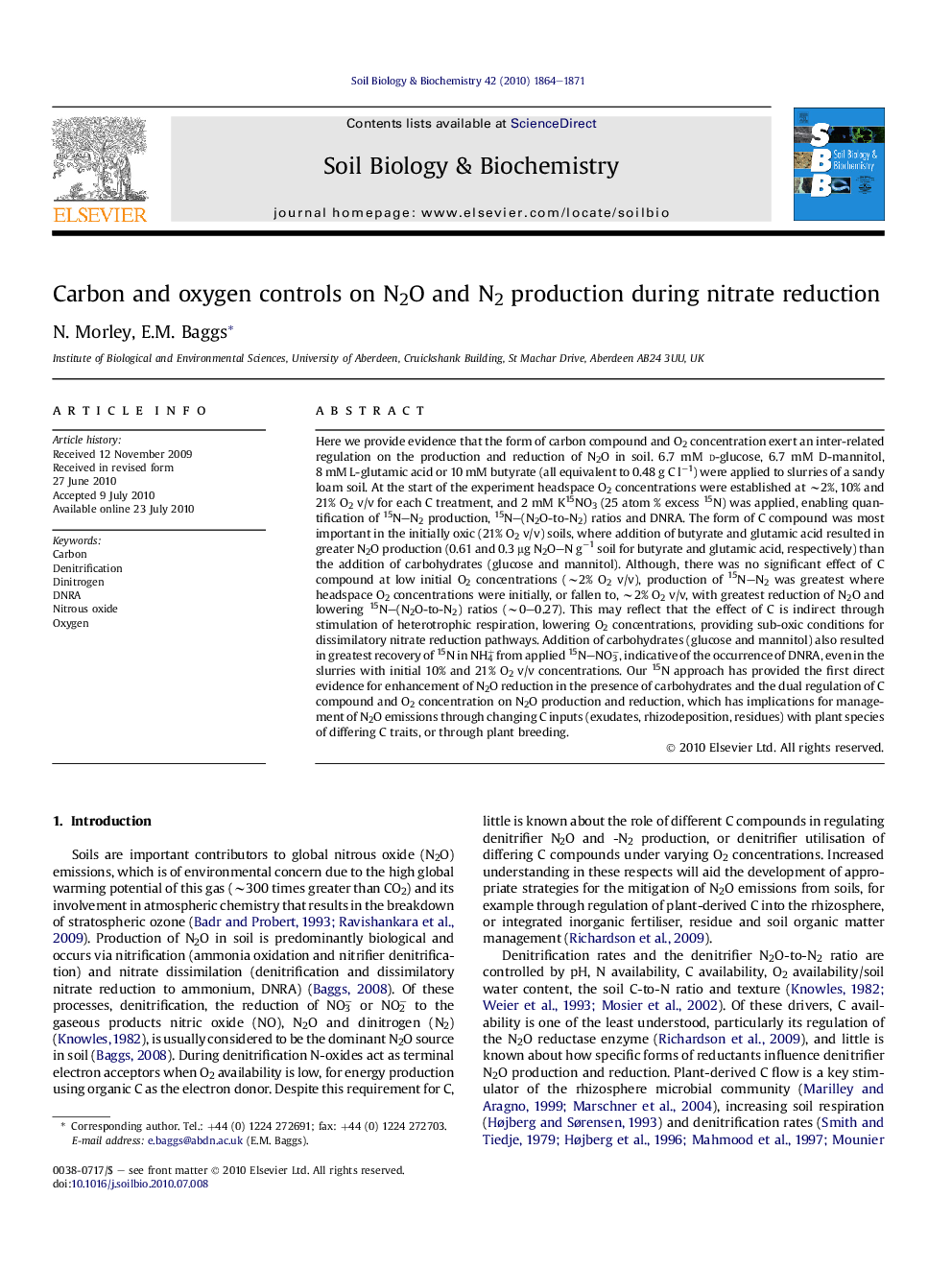| Article ID | Journal | Published Year | Pages | File Type |
|---|---|---|---|---|
| 2025424 | Soil Biology and Biochemistry | 2010 | 8 Pages |
Here we provide evidence that the form of carbon compound and O2 concentration exert an inter-related regulation on the production and reduction of N2O in soil. 6.7 mM d-glucose, 6.7 mM D-mannitol, 8 mM L-glutamic acid or 10 mM butyrate (all equivalent to 0.48 g C l−1) were applied to slurries of a sandy loam soil. At the start of the experiment headspace O2 concentrations were established at ∼2%, 10% and 21% O2 v/v for each C treatment, and 2 mM K15NO3 (25 atom % excess 15N) was applied, enabling quantification of 15N–N2 production, 15N–(N2O-to-N2) ratios and DNRA. The form of C compound was most important in the initially oxic (21% O2 v/v) soils, where addition of butyrate and glutamic acid resulted in greater N2O production (0.61 and 0.3 μg N2O–N g−1 soil for butyrate and glutamic acid, respectively) than the addition of carbohydrates (glucose and mannitol). Although, there was no significant effect of C compound at low initial O2 concentrations (∼2% O2 v/v), production of 15N–N2 was greatest where headspace O2 concentrations were initially, or fallen to, ∼2% O2 v/v, with greatest reduction of N2O and lowering 15N–(N2O-to-N2) ratios (∼0–0.27). This may reflect that the effect of C is indirect through stimulation of heterotrophic respiration, lowering O2 concentrations, providing sub-oxic conditions for dissimilatory nitrate reduction pathways. Addition of carbohydrates (glucose and mannitol) also resulted in greatest recovery of 15N in NH4+ from applied 15N–NO3−, indicative of the occurrence of DNRA, even in the slurries with initial 10% and 21% O2 v/v concentrations. Our 15N approach has provided the first direct evidence for enhancement of N2O reduction in the presence of carbohydrates and the dual regulation of C compound and O2 concentration on N2O production and reduction, which has implications for management of N2O emissions through changing C inputs (exudates, rhizodeposition, residues) with plant species of differing C traits, or through plant breeding.
